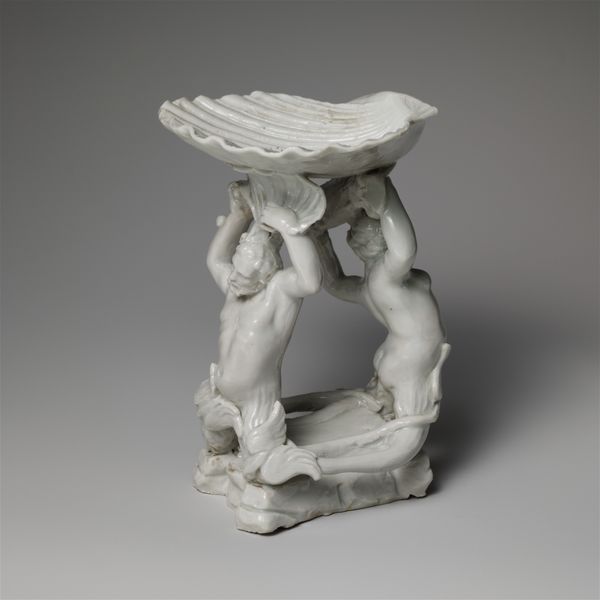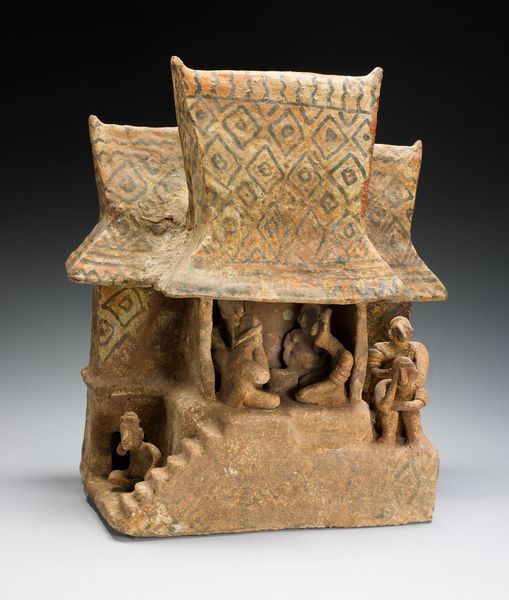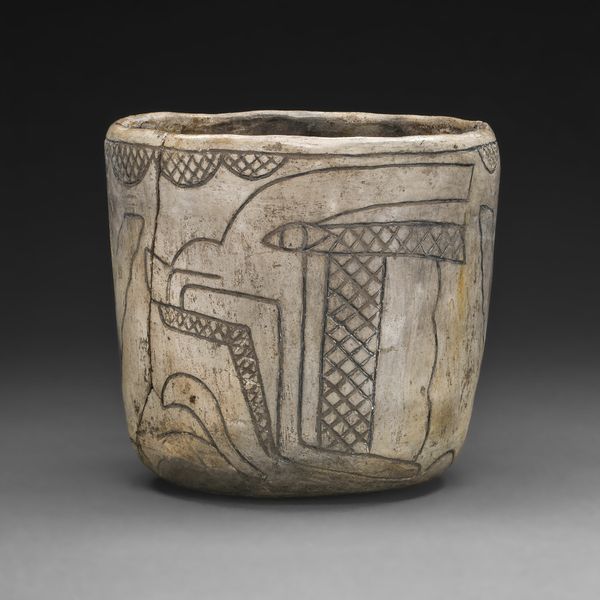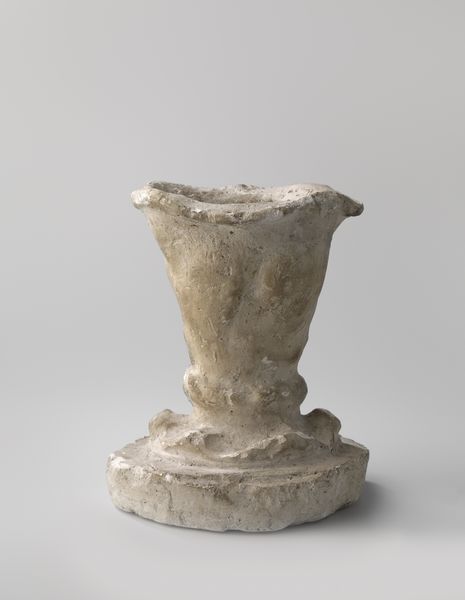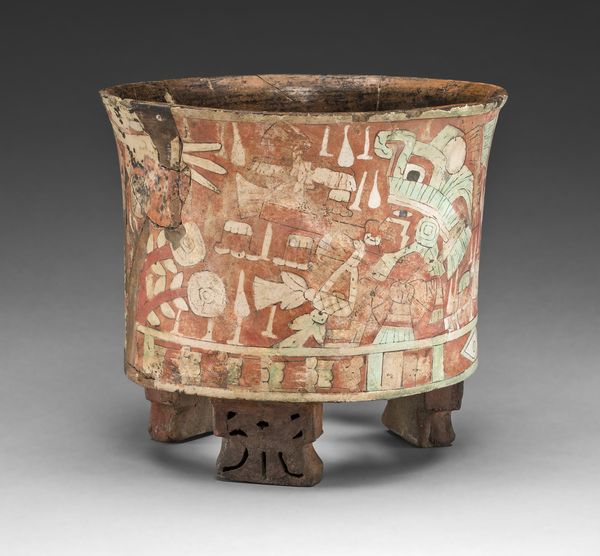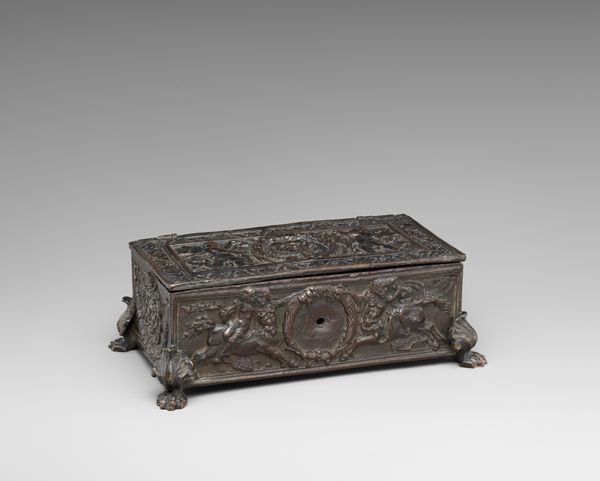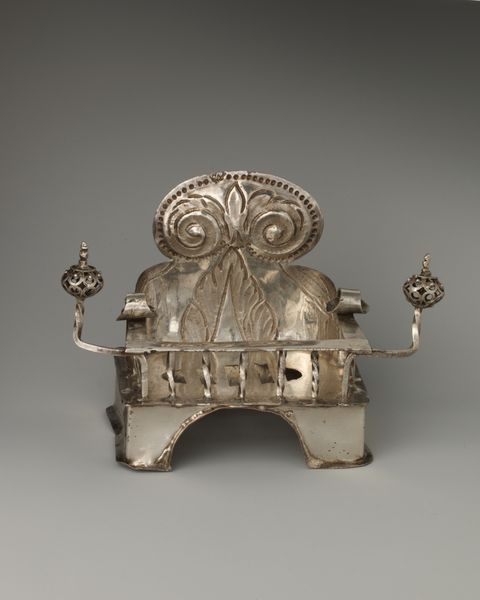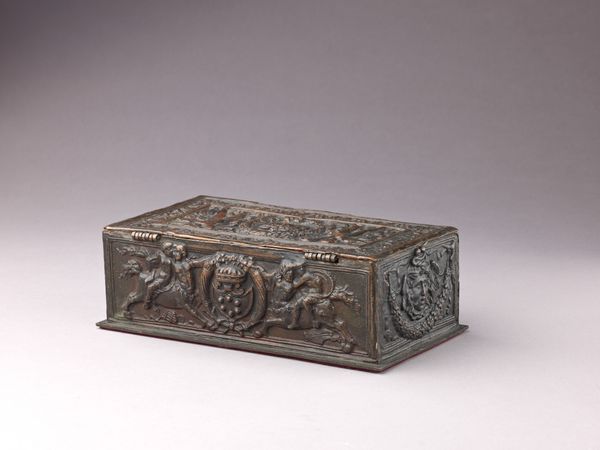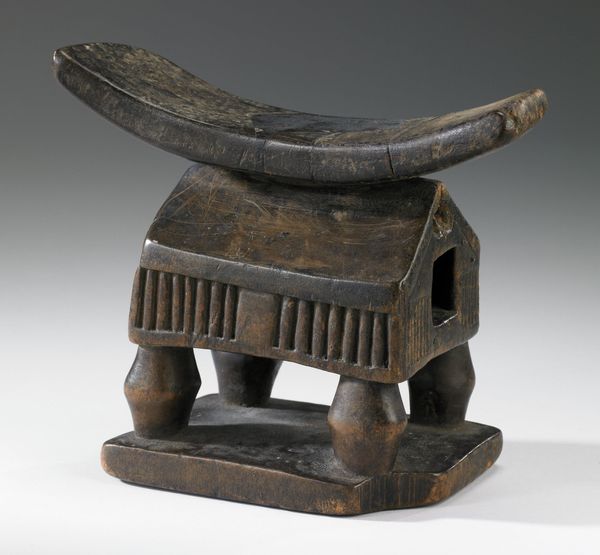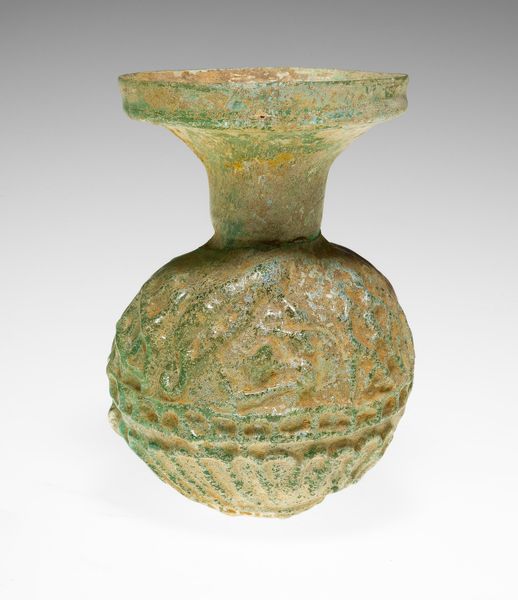
carving, sculpture
#
carving
#
sculpture
#
sculpture
#
indigenous-americas
Dimensions: 15 7/8 x 26 x 25 1/2 in. (40.3 x 66 x 64.8 cm)
Copyright: Public Domain
This metate was anonymously crafted from volcanic stone, its origins steeped in the ancient cultures of Costa Rica. Here, we see the symbolic dance between utility and the sacred. The metate itself, a ground for preparing sustenance, transcends mere functionality. Note how the legs are adorned with zoomorphic figures, perhaps jaguars or crocodiles, creatures of immense power and symbolic weight. These beings are not merely decorative. They evoke a deeper connection to the natural world, a testament to the cyclical nature of life and the ever-present forces of creation and destruction. Consider the serpent, a recurring motif across cultures, embodying transformation and renewal. Here, we see it entwined, a potent symbol of the life force itself. The collective memory of humankind is etched into these forms, resonating with our subconscious understanding of nature's power. This is more than a tool; it is a conduit to understanding our place within the grand tapestry of existence. The symbol persists, now reborn in stone.
Comments
minneapolisinstituteofart about 2 years ago
⋮
Flying panel metates or grinding stones such as this one were among the largest sculptures produced in Central America. They were prestige ritual objects owned by chiefs, and symbolically represented his control over labor and agricultural surplus. Themes portrayed on these metates are generally quite complex, but are almost always related to issues of fertility and renewal. The tripod supports of this sculpture feature figures of captives with their heads held in the beaks of birds, a reference to agriculture and sowing, as heads were symbolic of seeds. The central panel shows an individual with outstretched arms wearing a crocodile mask, surrounded by serpents. Both animals are connected to the earth and the supernatural.
Join the conversation
Join millions of artists and users on Artera today and experience the ultimate creative platform.

